Septoria leaf spot
July 7, 2015
Fungal leaf spots
Pathogen
Septoria spp.
Hosts include
Artemisia, Baptisia, Campanula, Chrysanthemum, Coreopsis, Delphinium, Dianthus, Echinacea, Gaillardia, Heuchera, Lamium, Lathyrus, Lupinus, Lychnis, Monarda, Potentilla, Ratibida, Rudbeckia, Stachys, Veronica and Viola.
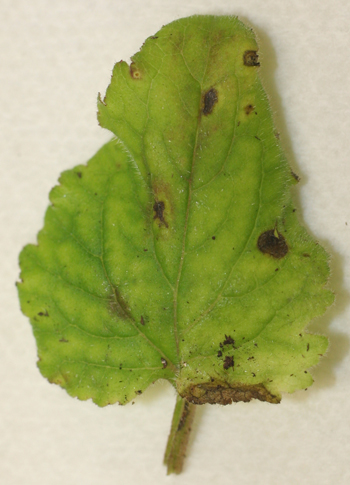
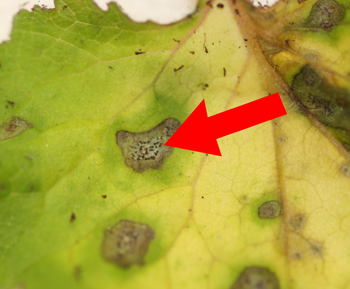
Lesions on Heuchera (left), and Septoria pycnidia are visible in lesions (right).
Symptoms
Tan to brown leaf spots. Small, black fruiting bodies (pycnidia) may be visible in the lesions. Lesions on Rudbeckia and Echinacea are purple. Lesions may be more severe on older foliage.
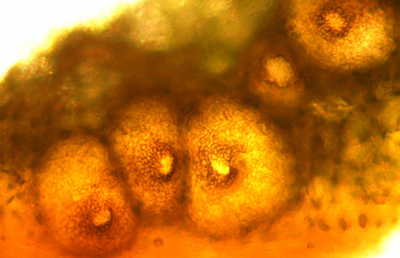
Microscopic view of pycnidia on leaf surface. Spores are released through the central opening in these volcano-like structures.
Spread
The disease may be introduced on infected material. Spores are splash-dispersed to nearby foliage. Disease can also be spread by workers moving through wet foliage.
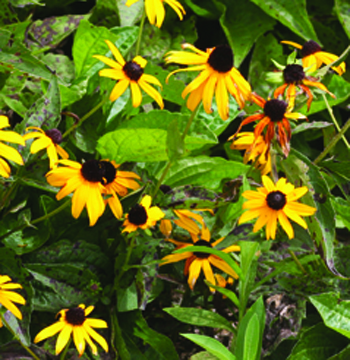
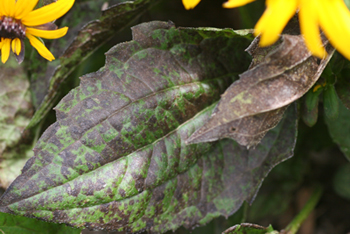
Purple leaf lesions caused by Septoria rudbeckiae. Rudbeckia and Ratibida are the only hosts of this particular species of Septoria. At right, a closer look at severe purpling on rudbeckia foliage.
Management
There are many species of Septoria. Each is relatively host-specific, affecting only a few plant genera. Remove and destroy infected plant material. Avoid overhead irrigation or carefully time it to limit the duration of leaf wetness. Protectant fungicides can be used to manage Septoria leaf spot.
Print a PDF of this page: Septoria leaf spot



 Print
Print Email
Email




